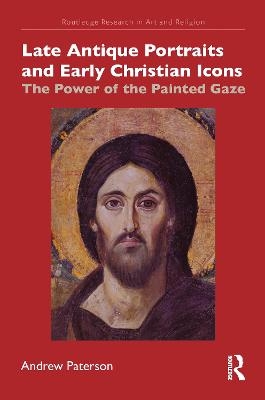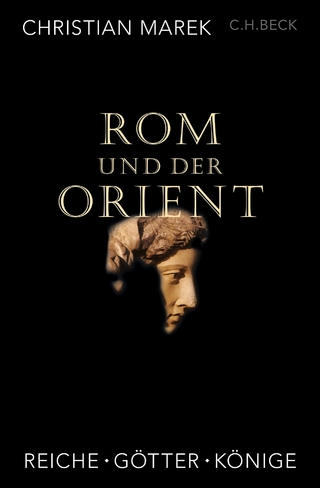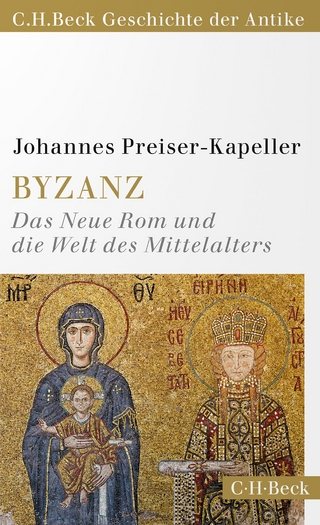
Late Antique Portraits and Early Christian Icons
The Power of the Painted Gaze
Seiten
2022
Routledge (Verlag)
978-0-367-69756-3 (ISBN)
Routledge (Verlag)
978-0-367-69756-3 (ISBN)
- Titel z.Zt. nicht lieferbar
- Versandkostenfrei
- Auch auf Rechnung
- Artikel merken
This book focuses on the earliest surviving Christian icons, dated to the sixth and seventh centuries, which resemble three other well-established genres of ‘sacred portrait’ also produced during late antiquity, namely Roman imperial portraiture, Greco-Egyptian funerary portraiture and panel-paintings depicting non-Christian deities.
This book focuses on the earliest surviving Christian icons, dated to the sixth and seventh centuries, which bear many resemblances to three other well-established genres of ‘sacred portrait’ also produced during late antiquity, namely Roman imperial portraiture, Graeco-Egyptian funerary portraiture and panel paintings depicting non-Christian deities.
Andrew Paterson addresses two fundamental questions about devotional portraiture – both Christian and non-Christian – in the late antique period. Firstly, how did artists visualise and construct these images of divine or sanctified figures? And secondly, how did their intended viewers look at, respond to, and even interact with these images? Paterson argues that a key factor of many of these portrait images is the emphasis given to the depicted gaze, which invites an intensified form of personal encounter with the portrait’s subject.
The book will be of interest to scholars working in art history, theology, religion and classical studies.
This book focuses on the earliest surviving Christian icons, dated to the sixth and seventh centuries, which bear many resemblances to three other well-established genres of ‘sacred portrait’ also produced during late antiquity, namely Roman imperial portraiture, Graeco-Egyptian funerary portraiture and panel paintings depicting non-Christian deities.
Andrew Paterson addresses two fundamental questions about devotional portraiture – both Christian and non-Christian – in the late antique period. Firstly, how did artists visualise and construct these images of divine or sanctified figures? And secondly, how did their intended viewers look at, respond to, and even interact with these images? Paterson argues that a key factor of many of these portrait images is the emphasis given to the depicted gaze, which invites an intensified form of personal encounter with the portrait’s subject.
The book will be of interest to scholars working in art history, theology, religion and classical studies.
Andrew Paterson is a Teaching Fellow at the University of Edinburgh.
Introduction 1. The Production of Sacred Portraits (i): Techniques and Stylistic Variation 2. The Production of Sacred Portraits (ii): The Visualisation of the Prototype 3. The Reception of Sacred Portraits (i): Functions and Meanings of the Depicted Gaze 4. The Reception of Sacred Portraits (ii): Their Role in Spiritual Practice Conclusion
| Erscheinungsdatum | 19.05.2022 |
|---|---|
| Reihe/Serie | Routledge Research in Art and Religion |
| Zusatzinfo | 10 Halftones, color; 61 Halftones, black and white; 10 Illustrations, color; 61 Illustrations, black and white |
| Verlagsort | London |
| Sprache | englisch |
| Maße | 174 x 246 mm |
| Gewicht | 580 g |
| Themenwelt | Kunst / Musik / Theater ► Kunstgeschichte / Kunststile |
| Kunst / Musik / Theater ► Malerei / Plastik | |
| Geschichte ► Allgemeine Geschichte ► Altertum / Antike | |
| ISBN-10 | 0-367-69756-4 / 0367697564 |
| ISBN-13 | 978-0-367-69756-3 / 9780367697563 |
| Zustand | Neuware |
| Informationen gemäß Produktsicherheitsverordnung (GPSR) | |
| Haben Sie eine Frage zum Produkt? |
Mehr entdecken
aus dem Bereich
aus dem Bereich
das Neue Rom und die Welt des Mittelalters
Buch | Softcover (2023)
C.H.Beck (Verlag)
CHF 30,80
Krieg und Frieden im Goldenen Zeitalter Roms
Buch | Hardcover (2024)
Klett-Cotta (Verlag)
CHF 44,75


